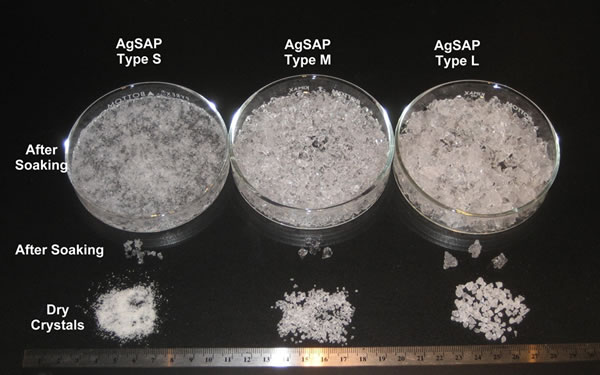Super Absorbent Polymers (SAPs) have become a cornerstone in various industries, revolutionizing products and processes due to their exceptional water-absorbing abilities. To understand their transformative impact, let’s dive into the intricate workings of Super Absorbent Polymers and explore the science behind their remarkable capabilities.

- Molecular Structure
At the core of SAPs lies a unique molecular structure designed to maximize water absorption. These polymers are crafted through a process known as polymerization, creating a network of long chains with a high degree of cross-linking. This structure sets the stage for SAPs to efficiently absorb and retain water. - Water Absorption Mechanism
The absorption mechanism of SAPs is rooted in their hydrophilic nature, meaning they have a strong affinity for water molecules. When exposed to water, SAPs undergo a process called hydration, where water molecules are drawn into the polymer structure.
Capillary Action:
The capillary action within the polymer structure allows water to be drawn into the spaces between the polymer chains. This capillary effect is crucial for the rapid absorption of large amounts of water.
Swelling and Gel Formation:
As water is absorbed, the polymer chains swell and expand, transforming the SAP into a gel-like substance. This gel formation is responsible for locking in the absorbed water and preventing its release under pressure.
- Absorption Capacity
One of the defining features of SAPs is their extraordinary absorption capacity. These polymers can absorb water in amounts ranging from 100 to 1000 times their own weight, a capability that far surpasses traditional water-absorbing materials. - Applications Across Industries
- Hygiene Products:
In diapers and sanitary products, SAPs provide a dry and comfortable experience by efficiently absorbing and locking away liquid. - Agriculture:
SAPs contribute to soil moisture retention, reducing irrigation needs and enhancing crop yield. - Medical Field:
Used in wound dressings and medical products, SAPs aid in maintaining a sterile environment by absorbing bodily fluids. - Packaging:
In the packaging industry, SAPs extend the shelf life of products by absorbing excess moisture, preventing degradation. - Construction:
As additives in concrete, SAPs improve properties such as shrinkage resistance, contributing to durable construction materials.
Conclusion:
Super Absorbent Polymers operate at the intersection of science and innovation, providing unparalleled water-absorbing capabilities. Their molecular structure, water absorption mechanism, and remarkable absorption capacity make them a versatile solution across industries. As technology advances, the applications of SAPs are likely to expand, offering sustainable and efficient solutions to meet the evolving needs of various sectors. Join us in unraveling the science behind SAPs – where molecular ingenuity meets real-world impact.

